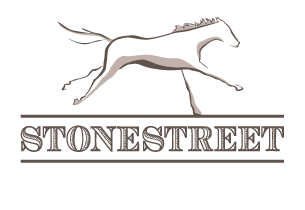Every December you will see a fleet of tractors crisscrossing the fields at Stonestreet Farm, each pulling a large section of what looks very much like chain link fence. Harrows , originating from the Dutch word for ‘rake’, are used at Stonestreet once the Bluegrass Region of Kentucky has experienced the first three hard frosts of winter.
Chain Harrowing has three purposes:
- It spreads manure!
As many rose gardeners know horse manure is full of nutrients beneficial to plants, harrowing distributes the good stuff equally across the pasture.
- It scarifies the soil!
To scarify is to break up the hard surface of the soil. The ground in high traffic areas such as gates, near waterers and along fence lines becomes compacted and the harrow allows moisture in, making it easier for new grass to grow.
- It breaks up thatch!
Thatch is dead organic material that stifles anything below; breaking it up allows the new growth underneath to thrive.
At Stonestreet we wait until early winter for a dry spell that follows three hard frosts. The frosts guarantee that any weeds in the paddocks are dormant – seeds from undesirable plants are not something we want to spread. If you want to learn more about pasture maintenance visit the How to Build a Racehorse blog!
